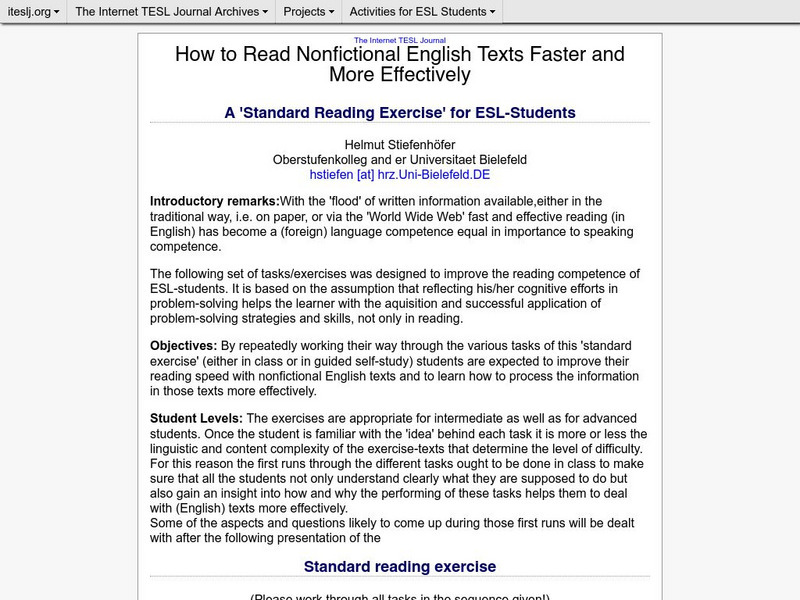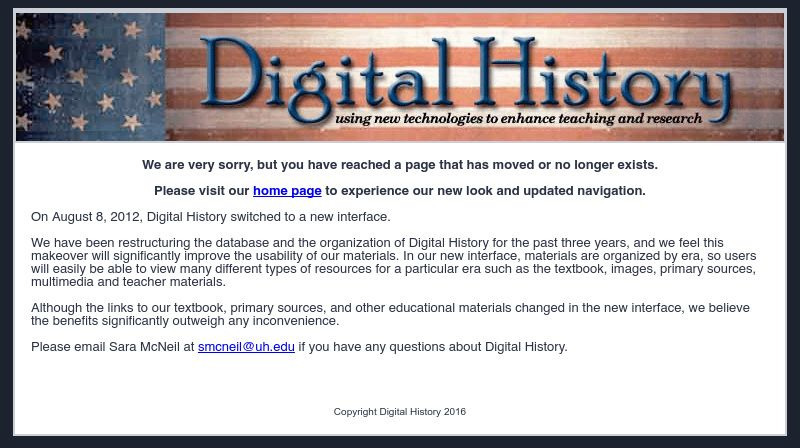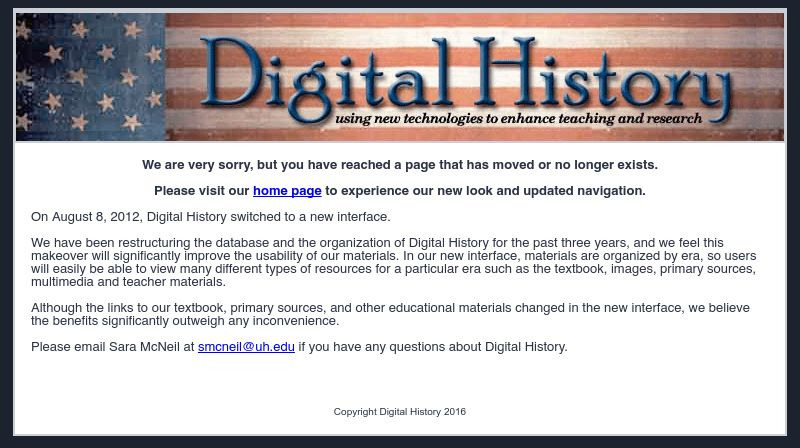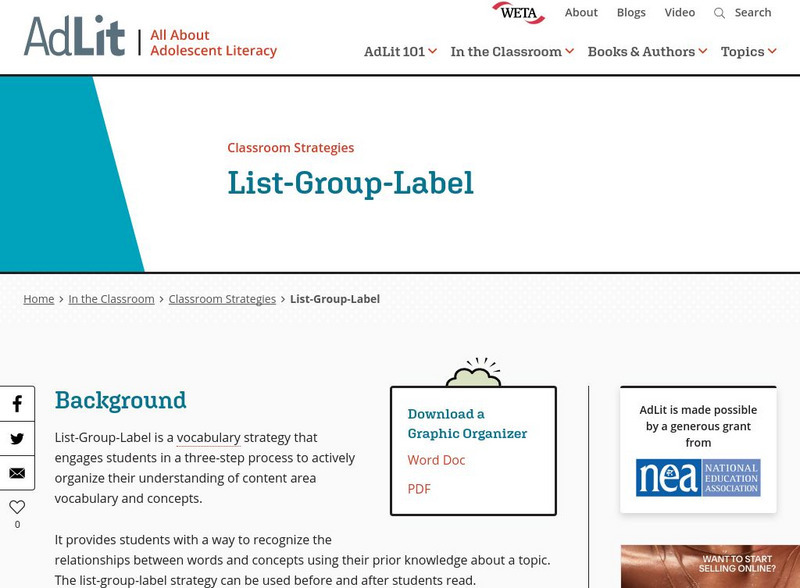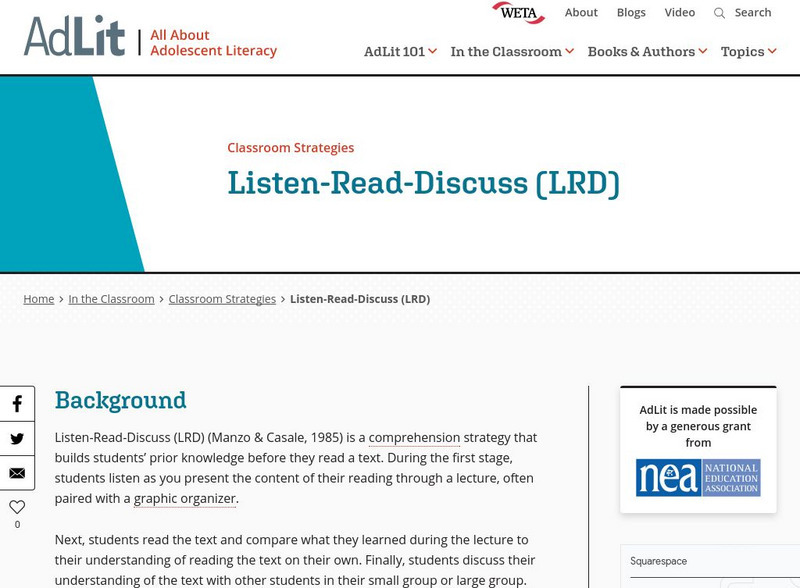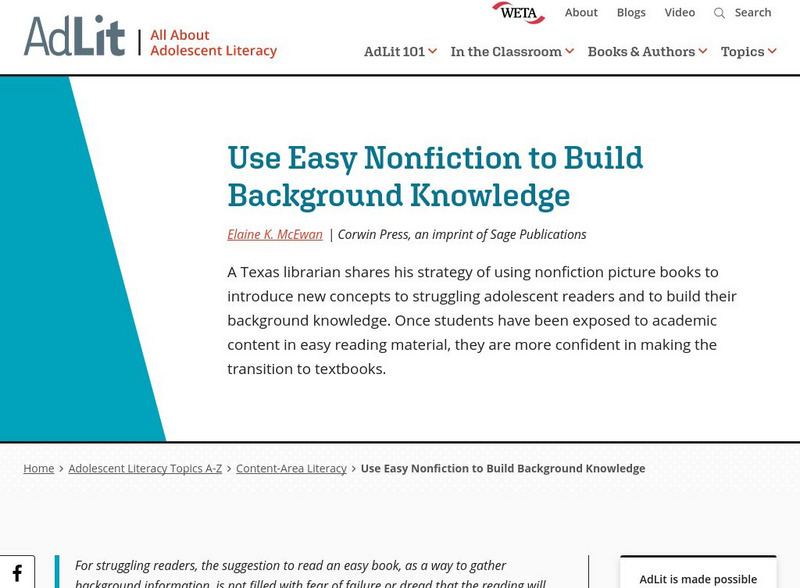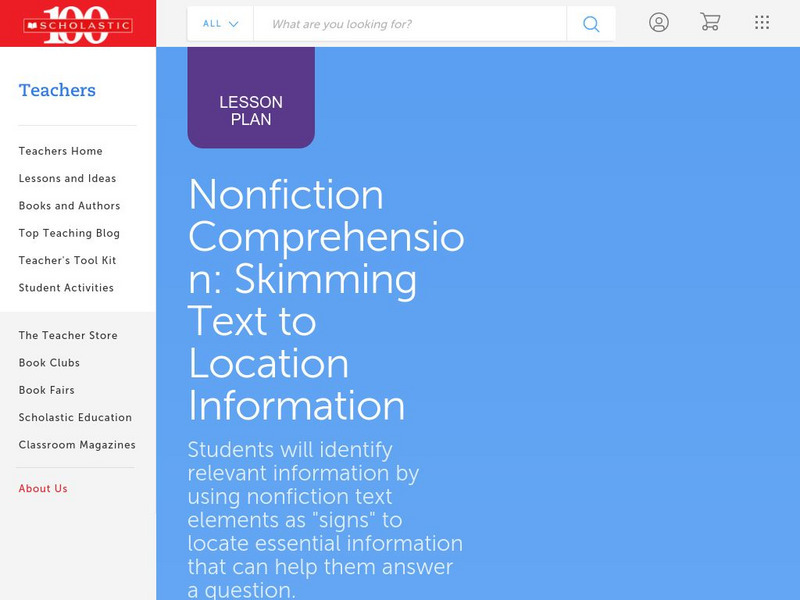British Library
British Library: 19th Century Non Fiction Texts: Education
This thematic collection will allow learners to read and understand 19th-century non-fiction texts, and support them in identifying key features for a range of genres, audiences, and purposes. Each source is accompanied by original...
TESL Journal
The Internet Tesl Journal: Reading Nonfiction Texts Fast
Article lists a series of steps and tasks to make reading texts more efficient and clear. Written primarily for teachers of ESL students but tasks work for all students.
Massachusetts Institute of Technology
Mit: Internet Classics Archive: Works of Plutarch
A list of the works of Plutarch that have been translated, each entry linked to complete text of that article and a discussion page.
Capital Community College Foundation
Guide to Grammar and Writing: Classification and Analysis
This site provides some help reading an essay that deals with the classification and analysis of a piece of literature. Offers some instruction about the type of essay, a sample text, and guiding questions to help you analyze your own...
Blackdog Media
Classic Reader: Authors: William D. Howells
This site features the author William D. Howells including the full text of four novels and five short stories.
California State University
Reading Strategies From the University of Waterloo
Brief and easy to read, this California State University Northridge site lists strategies for getting the most of your reading. Geared for reading texts and technical material.
University of Groningen
American History: Essays: Philosophy and Literature: History and Literature
Discusses the state of literature and written history in the 1800s as they related to the development of a national identity, and the role Romanticism played. With the passage of time, more serious literature emerged and authors began to...
Discovering Egypt
Discovering Egypt: Hieroglyphic Typewriter
Write names and secret messages with the Egyptian hieroglyphs and then email and print the results.
Digital History
Digital History: The American Renaissance
A description of American Romantic authors, their backgrounds and what they wrote. These writers made American literature truly American.
Digital History
Digital History: American Ethnic Literature
Educated white men weren't the only ones contributing to a truly American literature. Read about the literature written by Native Americans, African Americans, Mexican Americans, and Irish Americans. All added to the melting pot of...
National Endowment for the Humanities
Neh: Edsit Ement: Lesson 1: Understanding the Context of Modernist Poetry
In this lesson plan, students will consider Lesson 1: Understanding the Context of Modernist Poetry. Worksheets and other supporting materials can be found under the Resources tab.
AdLit
Ad lit.org: Classroom Strategies: First Lines
First Lines is a strategy in which students read the beginning sentences from assigned readings and make predictions about the content of what they're about to read. This pre-reading technique helps students focus their attention on what...
AdLit
Ad lit.org: Classroom Strategies: List Group Label
It provides students with a way to recognize the relationships between words and concepts using their prior knowledge about a topic. The list-group-label strategy can be used before and after students read.
AdLit
Ad lit.org: Classroom Strategies: Listen Read Discuss (Lrd)
Listen-Read-Discuss (LRD) (Manzo & Casale, 1985) is a comprehension strategy that builds students' prior knowledge before they read a text. During the first stage, students listen as you present the content of their reading through a...
AdLit
Ad lit.org: Classroom Strategies: Power Notes
Power Notes is a strategy that teaches students an efficient form of organizing information from assigned text. This technique provides students a systematic way to look for relationships within material they are reading. Power Notes...
AdLit
Ad lit.org: Explicit Comprehension Strategy Instruction
Use explicit strategy instruction to make visible the invisible comprehension strategies that good readers use to understand text. Support students until they can use the strategies independently. Recycle and re-teach strategies...
AdLit
Ad lit.org: Use Easy Nonfiction to Build Background Knowledge
A Texas librarian shares his strategy of using nonfiction picture books to introduce new concepts to struggling adolescent readers and to build their background knowledge. Once students have been exposed to academic content in easy...
AdLit
Ad lit.org: Seven Strategies to Teach Students Text Comprehension
Comprehension strategies are conscious plans - sets of steps that good readers use to make sense of text. Comprehension strategy instruction helps students become purposeful, active readers who are in control of their own reading...
AdLit
Ad lit.org: Using Multiple Texts to Teach Content
Each of us, every day, has to contend with multiple messages or texts-in the news, over the Internet, in our workplace, in books, and in conversation. Making sense of these sometimes conflicting messages is critical. But without being...
AdLit
Ad lit.org: For Middle Schoolers: Activities to Build College Level Reading Skills
ACT has developed this list of activities to help middle-school students improve their reading ability. Parents and educators can use this information to help ensure that these students are on target for college and career readiness.
AdLit
Ad lit.org: Key Literacy Component: Text Comprehension
Text comprehension allows readers to extract or construct meaning from the written word. Students who misread words or misinterpret their meanings are at a disadvantage. Proper instruction can boost students' skills in this key area.
AdLit
Ad lit.org: Assistive Technology Tools: Reading
Learn about assistive technology tools - from audiobooks to variable-speed tape recorders - that help students with reading.
AdLit
Ad lit.org: Key Literacy Component: Writing
Students who don't write well aren't able to learn and communicate effectively. This article explains what good writing skills are and how to help struggling young writers gain those skills through proper instruction.
Scholastic
Scholastic: Lesson Plan for Nonfiction Comprehension: Skimming Text
Build comprehension by developing reading strategies for use with nonfiction text. This instructional activity focuses on teaching students to recognize text elements as clues to help them quickly locate key information in text.

